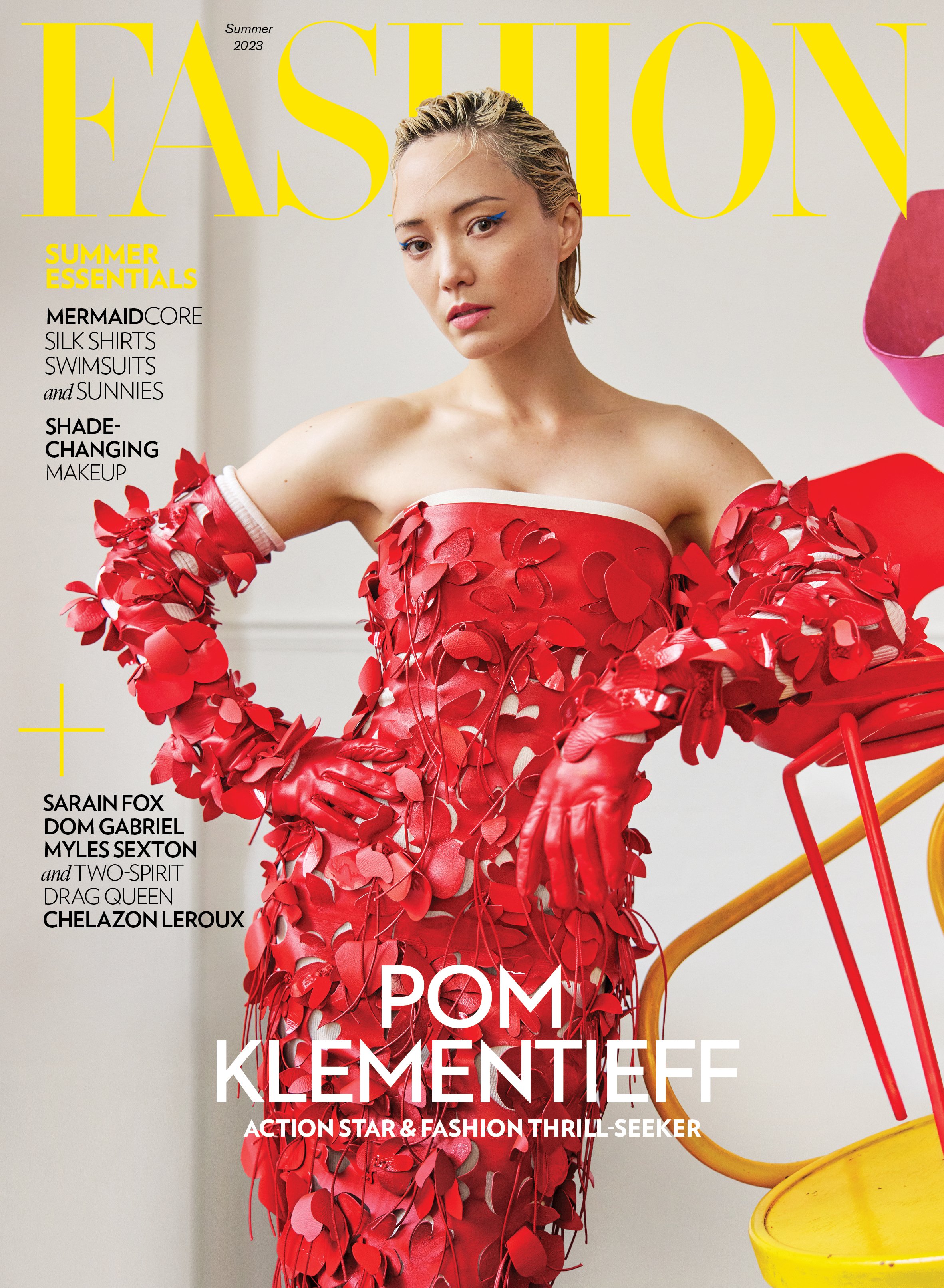The ultimate curly hair guide: 7 tips for your most perfect spirals ever

If you have curly hair, you know that once warm weather hits, frizz is on its way. And while summer begs for braids, sometimes a girl needs to let her locks down. Of course, trying to combat a head of curls is a daunting task. Luckily, you can cool it on the hair hysteria, because we’ve uncovered a summer survival guide fit for your curls.
When it comes to caring for curls, a lot can get lost in translation. You know those no-wash, pre-poo and pineappling tips that many swear by? Well, they aren’t making the task any more straightforward. That’s why we spoke with Caroline Muir, owner of The Curl Ambassadors and Tippi Shorter, Aveda’s global artistic director for textured hair (she’s also worked with celebs like Rihanna, Jennifer Hudson, Lady Gaga, Alicia Keys and Beyoncé) to help us navigate our way through the non-negotiables of curly hair maintenance.
“In real estate Donald Trump says, ‘Location, location, location.’ We say, ‘Hydrate, hydrate hydrate,'” says Muir. “Keep giving those curls a drink with water, great products, a great cut, shape and regular pruning,” she notes. When it comes to your curls, there are basic rules to swear by. Ensure you’re working with a “very gentle touch, using your hands instead of brushes and combs, opting for covered elastics for ponies and using hairpins instead of bobby pins will go a long way with curly hair,” adds Shorter. So in order to help maintain your mane this sunny season, we’ve outlined the dos and please do not’s of cultivating your curls.
1. Fighting frizz
Banishing your flyaways is always a challenge. And while there are serums, mousses and ‘miracle products’ galore, your routine can be better managed with a proper in-shower routine. Muir explains that “to minimize that frizz you will need a great conditioner combined with a cream-based leave-in conditioner, coupled with a great gel to hold and provide that definition. Additionally, refrain from touching [your hair] when wet. The goal is to never separate the curls!”
It’s important to note that less is always more with your vanity helpers. We’re trying to refrain from those middle-school crunchy curls that were the result of an alcohol-based mousse and too much product. “Hydration is key,” says Shorter. “Keep your hair hydrated, drink plenty of water, and use a leave-in conditioner that help with detangling and also adds great shine.” Innovative products are constantly popping up, and these curl cures will assist in keeping your locks looking light and bouncy.
Anything with too much weight or added alcohol will shrink your spirals and leave them looking brittle. And if you’re looking to start styling post-product, a major secret to success comes in the form of the pineappling technique (loosely tying your hair up at the top of your head at bedtime, reducing frizz while controlling your coif in between washes). It also gets your hair up and out of the way while you sleep, allowing for the oils to hit the ends faster and more effectively.
2. Second day hair
Your hair will benefit from skipped showers. “No-poo” refers to a no-shampoo approach to caring for curls, which safeguards against sulfates and other irritants that can alter the state of your curl. Generally speaking, you should be washing about twice a week, but we won’t judge if you skip one. Additionally, your curls need to be saturated in their natural oils, as they help to coat the shaft with frizz-fighting elements all while strengthening your strands.
Muir adds that “washing, is really just cleansing your scalp, and you want to allow your own natural oils to penetrate from roots to ends. Showers wash our healthy oils away, but it’s those oils that help protect our locks and decrease breakage. However you should be conditioning and detangling as much as possible.” Furthermore, avoid alcohol-based products as these cut down the time in between your showers. “Alcohol should not be listed in the top five ingredients [on the back of the bottle]. Also, using products that keep or distribute moisture in the hair is essential in the care of curly hair,” adds Shorter.
3. Sulfates
When you are ready to wash, remember that your locks crave a different formula than your straight-haired friends. “Stay away from sulfates or non-hydrating shampoos as they tend to dry out textured hair. If you’re looking for a permanent softening, you can try a texturizer from a licensed stylist and always do a weekly deep moisture treatment to keep hair soft,” notes Shorter. When washing your hair, find a sulfate-free formula that still lathers well.
Since you’re not washing often, you want to ensure that you’re coating your hair with all the nutrients and moisture it craves. But if you’re finding that shampoo is still weighing down your strands, consider avoiding it all together. Enter co-washing, a method that involves no shampoo whatsoever. This alternative boasts no sulfates and hydrates your hair, all the while effectively rinsing away dirt and debris. The technique avoids over-stripping your natural oils and is ultra-moisturizing.
4. Conditioner
Look into a hydrating treatment such as a deep conditioner pre-shampoo. This preps your strands for the manipulation that occurs during the shower process, and as the name states can also sit in front of your shampoo step. Many curly-haired folks swear by the CWC, a condition-wash-condition routine that helps your hair maintain its overall hydration. “I would recommend cleansing the hair one to three times a week, and I prefer using a cleansing conditioner versus shampoo because of their ultra- hydrating properties with a bonus of cleansing,” says Shorter.
“Also, using a cream for thick hair and a serum for fine hair as a leave-in preps the hair with shine and frizz-fighting benefits.” And the curlier your locks, the longer it will take for your scalp’s natural oils to reach the ends. So by working in a conditioner before your shampoo, you’re prepping your hair and doubling up on moisture.
5. Brushing
If you love the look of your curls, you should be avoiding your brush at all costs. Brushing your hair can actually create more tangles, but if you must, opt for your fingers or a wide-toothed comb instead. But we’re going to just note that you should avoid touching your curls at all costs, as this will disrupt their formations. Simply put, the more you manhandle your mane, the more friction you’re creating.
This hand-in-hair syndrome, which best describes someone who can be seen running their fingers through their hair at any given moment, can create an investable cloud of frizz. By avoiding that habit, you can combat breakage at all costs. Muir adds that “when finished styling, don’t touch [your hair] and let those curls form.” A simple DIY trick for reactivating any curls that got crushed by your comb requires one part conditioner with four parts water. Simply mist and scrunch for just-showered style.
6. Salon visits
Even if you have perfectly straight hair, salon visits are vital. Unfortunately, curly hair is susceptible to split ends too, so trimming those regularly will ensure your hair is growing as it should. Just remember, your curls will retract when dehydrated, so we recommend opting for a dry cut. If done well, there won’t be any surprises in length or shape. Additionally, try testing out protective styles in between those salon visits. These can be created with simple braids and twists that help protect against environmental stressors and damage alike.
These plaits will also banish manipulation and breakage, all the while encouraging healthy hair growth. Muir says that to “maintain a great shape, get a trim every 3 months. Find a great salon that believes in curls and make the experience life-changing with great shaping, great products and great education.”
7. Heat tools
This should go without saying, but heat damage is killing your curl. Since your ends are more prone to breakage and damage, avoid applying any heat. But if you’re in a hurry, flip your head upside down and work the heat from the roots. Avoid touching the tips and leave your hair semi-dry. While you can’t control the outcome of air-drying your hair, the long-term effects will be well worth the sacrifice.
Just remember that any heat you apply will alter the powerful proteins that provide your signature shape, so limit your heat styling tools and never go above 400 degrees. And on the chance that your curls have completely fallen flat, nix styling all together and swear by some leave-in treatments that can give your locks the life they’re craving.




